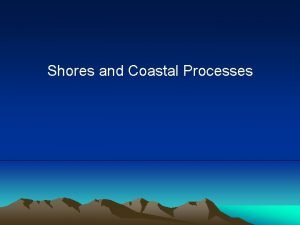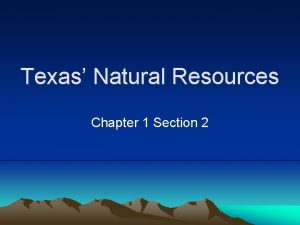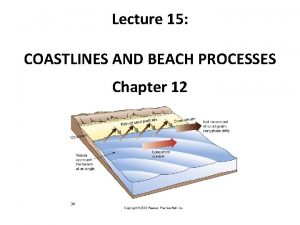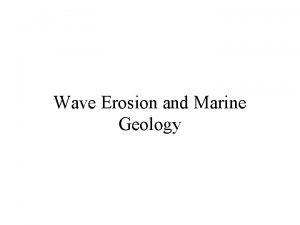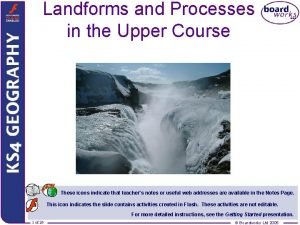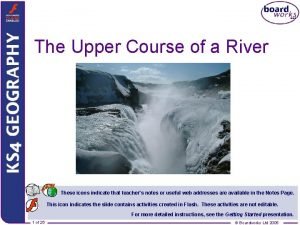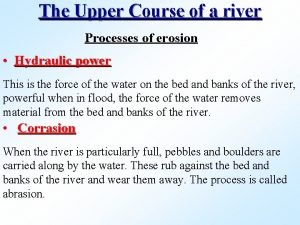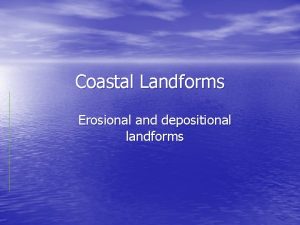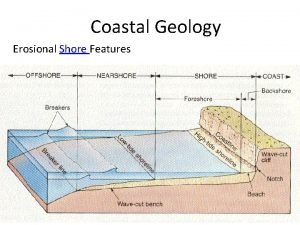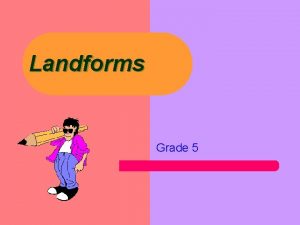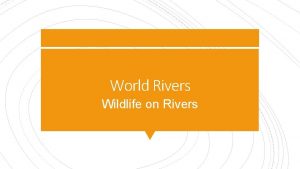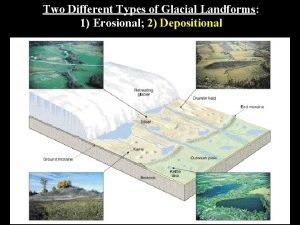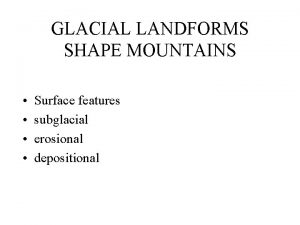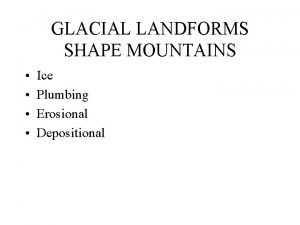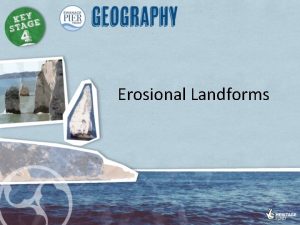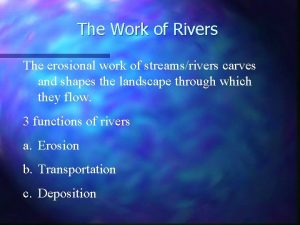Erosional landforms of rivers in the upper course












- Slides: 12

Erosional landforms of rivers in the upper course

Erosional Landforms • Upper-course river features include steep-sided Vshaped valleys, interlocking spurs, rapids, waterfalls and gorges. • As the river moves through the upper course it cuts downwards. The gradient here is steep and the river channel is narrow. Vertical erosion in this highland part of the river helps to create steep sided V-shaped valleys, interlocking spurs, rapids, waterfalls and gorges:


V-shaped valley The river cuts down through the land by erosion. Rain erodes the sides of the valley and widens the V. gorge A narrow river with steep sides. You find gorges in places with hard rock that does not erode easily. waterfall The river flows over a layer of hard rock with softer rock below. The softer rock erodes faster. oxbow lake A meander that got cut off when the river flooded and flowed straight.

Interlocking Spurs • As the river erodes the landscape in the upper course, it winds and bends to avoid areas of hard rock. This creates interlocking spurs, which look a bit like the interlocking parts of a zip. Interlocking spurs on a tributary of the Yangtse

Gorge

Gorge • When the bed rock is very hard, the rapid and vigorous down cutting may cause steep walled valley called gorge.

Canyon

Canyon • When a gorge is very deep and long it is called a canyon. E. g. Grand Canyon cut by river Colorado in USA (320 Km long)

V-Shaped valley

V-Shaped valley • When the bedrock is not very hard, the river easily down cuts its bed. This results in the formation of V-shaped valleys. The sides of the valley are widened due to the process of weathering (breaking down of rocks due to wind, rain or river etc).

Waterfall • When a river tumbles down from a height it forms a waterfall. • Waterfall is formed where there is an alternate band of hard rock and soft rock. (Refer: How a waterfall develops, Geog 1, pg 86, steps 1, 2, 3 and 4) • When a river runs over alternating layers of hard and soft rock, rapids and waterfalls may form.
 Erosional coastal landforms
Erosional coastal landforms Why are some rivers in texas called “wrong way” rivers?
Why are some rivers in texas called “wrong way” rivers? Beach drift
Beach drift Breaking down of rocks
Breaking down of rocks Erosional vs depositional
Erosional vs depositional The steep rocky coast rising almost vertically above
The steep rocky coast rising almost vertically above Waterfall
Waterfall Waterfall formation
Waterfall formation Upper course of a river
Upper course of a river Cut brick lengthwise
Cut brick lengthwise Course number and title
Course number and title Chaine parallèle muscle
Chaine parallèle muscle Một số thể thơ truyền thống
Một số thể thơ truyền thống
